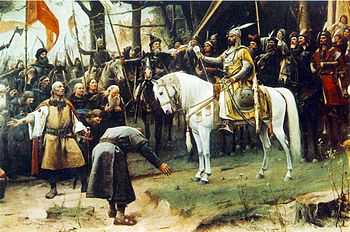Hungarian is the most populous group of the Finno-Ugric language family. The Hungarians once lived side by side with the Ossyrians and the Voguls in the ancestral homeland, and together they formed the Ugric branch, but an examination of the vocabulary of the Hungarian language revealed that they also had links with the Permian branch. There are many legacies from these times in our spiritual culture, including remnants in children’s plays, rhymes, lament songs, shamanism and spiritual beliefs. These are all components that can be traced back to very early times in our ethnic history.
In the course of their migration, the Hungarians turned from the Volga-Kama region to the south-south-east, moving from the forests to the steppe valleys. Here, in these areas, they became more familiar with the Turkic peoples, who introduced them to the most important aspects of animal husbandry: horse, cattle and sheep. In many areas of popular culture, several elements of the aforementioned familiarity have been preserved, although not necessarily in the same way as they were originally understood. Among these is the spread and development of shamanism in Hungarian culture, which unfolds in the figure of the táltos, and the learning of runic writing, which is a reminder of this connection. In folk songs, the pentatonic, fifth-changing melodies are also linked to the Turkish peoples, and can be traced as far as Inner Asia, making up 10% of our folk songs known today. We can even find traces of this legacy in funeral and wedding customs.
It was through the Slavs that Christianity reached Hungary in the 10th century. With the advent of Christianity, many new phenomena, objects, words and concepts were introduced into Hungarian. For example, priest, friend, nun, saint, hell, miracle, etc… but it also gave us the names of our days: Thursday, Friday, Saturday, and of the great church holidays, Christmas.
More important from an ethnographic point of view is the influence that the Hungarian people have had in the field of agricultural culture. Important changes took place in the way the land was worked, with the appearance of fallow land and fallow fields, and also in the way the land was cultivated and harvested. The influence of this close contact can be seen in the fields of industry, crafts, family, kinship, clothing, the home, etc.
Other Western influences, as well as French, Italian, German, Slavic, are evident in folklore and material culture. One of the transmitters of this was the Church, which transmitted a new spiritual culture to the Hungarians through its legends, saints, liturgies and customs associated with the feasts.
Dóra Horváth
Source: https://mek.oszk.hu/02700/02789/html/5.html
Source of imagine: wikipedia.hu
Main photo: Home occupation

